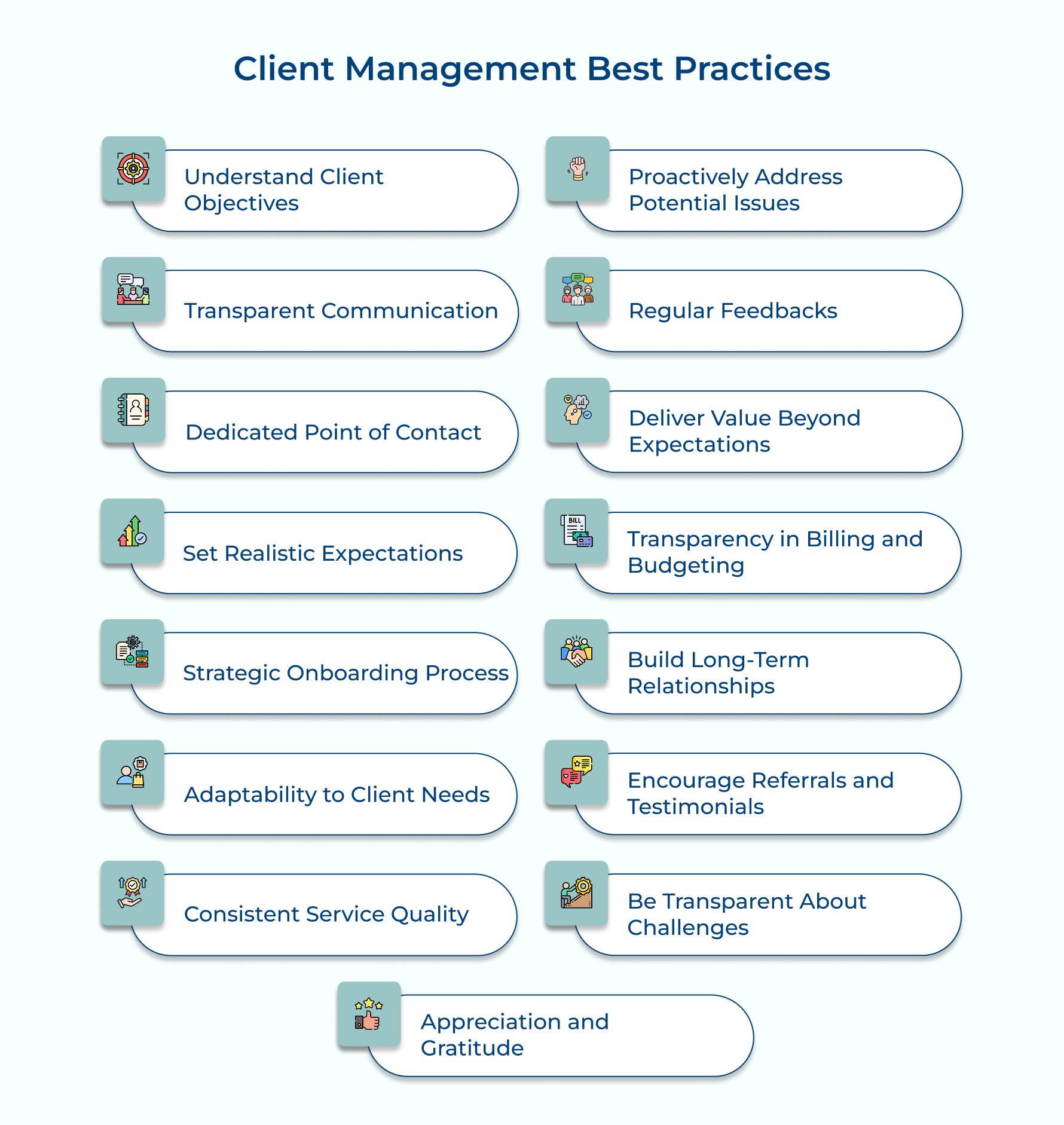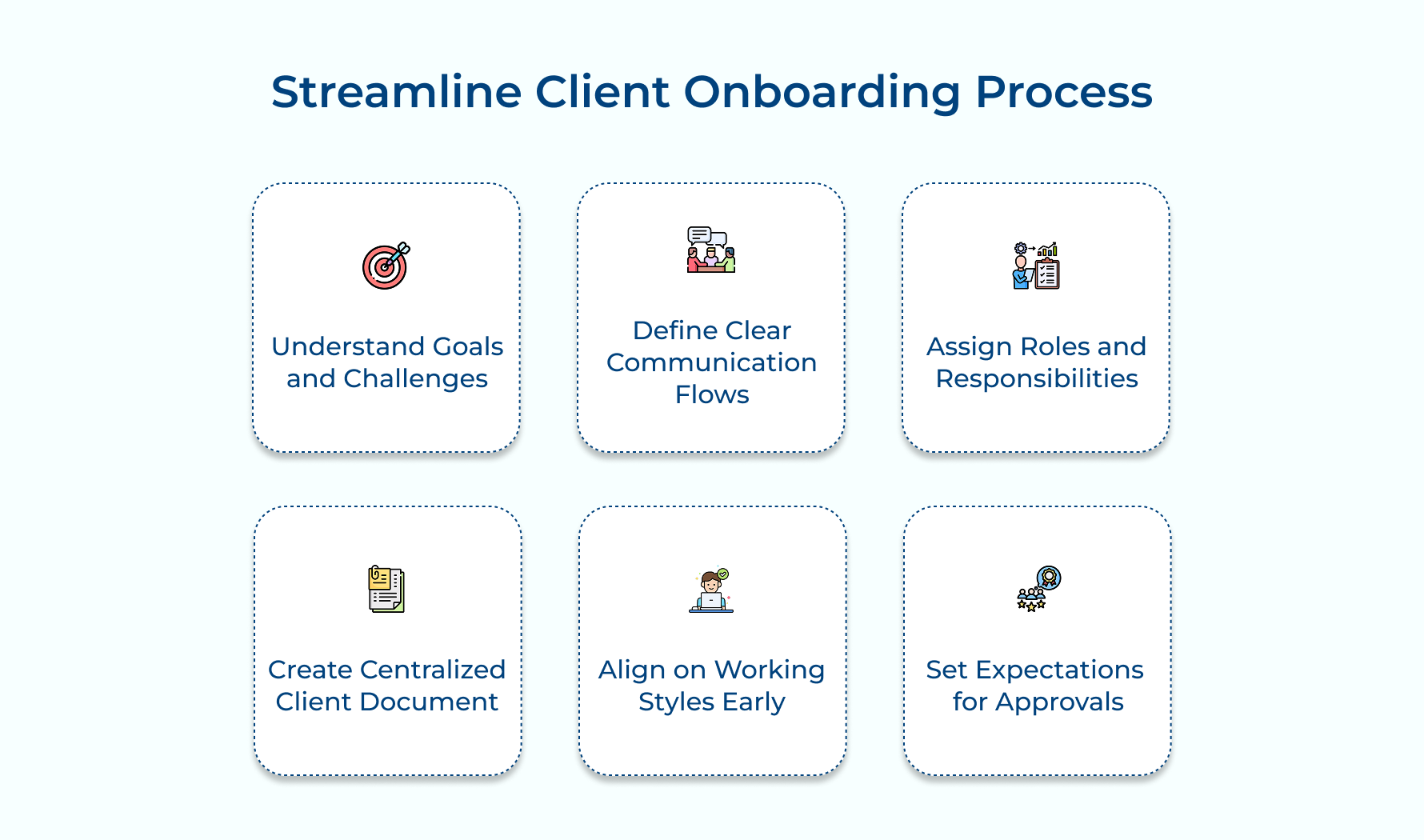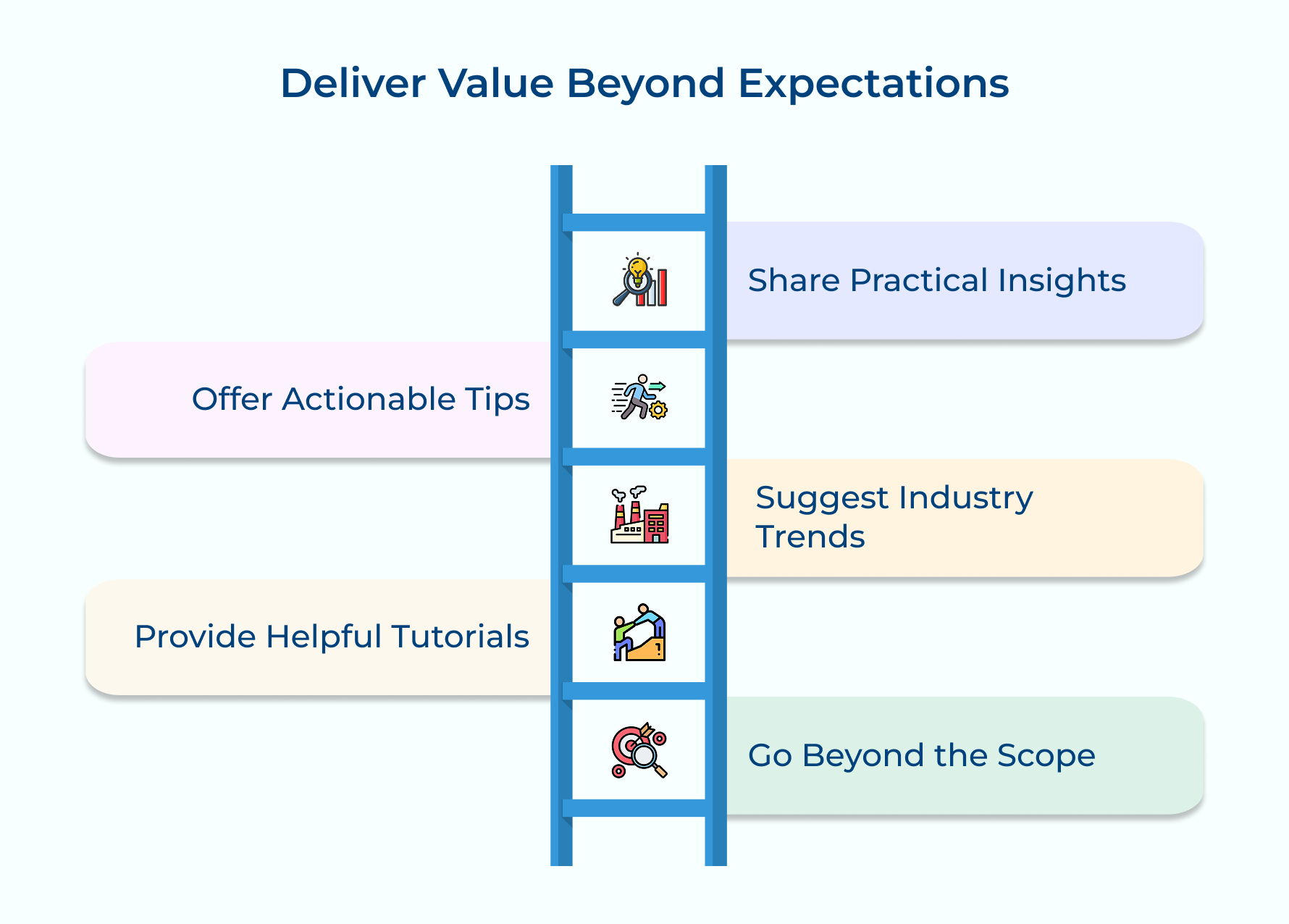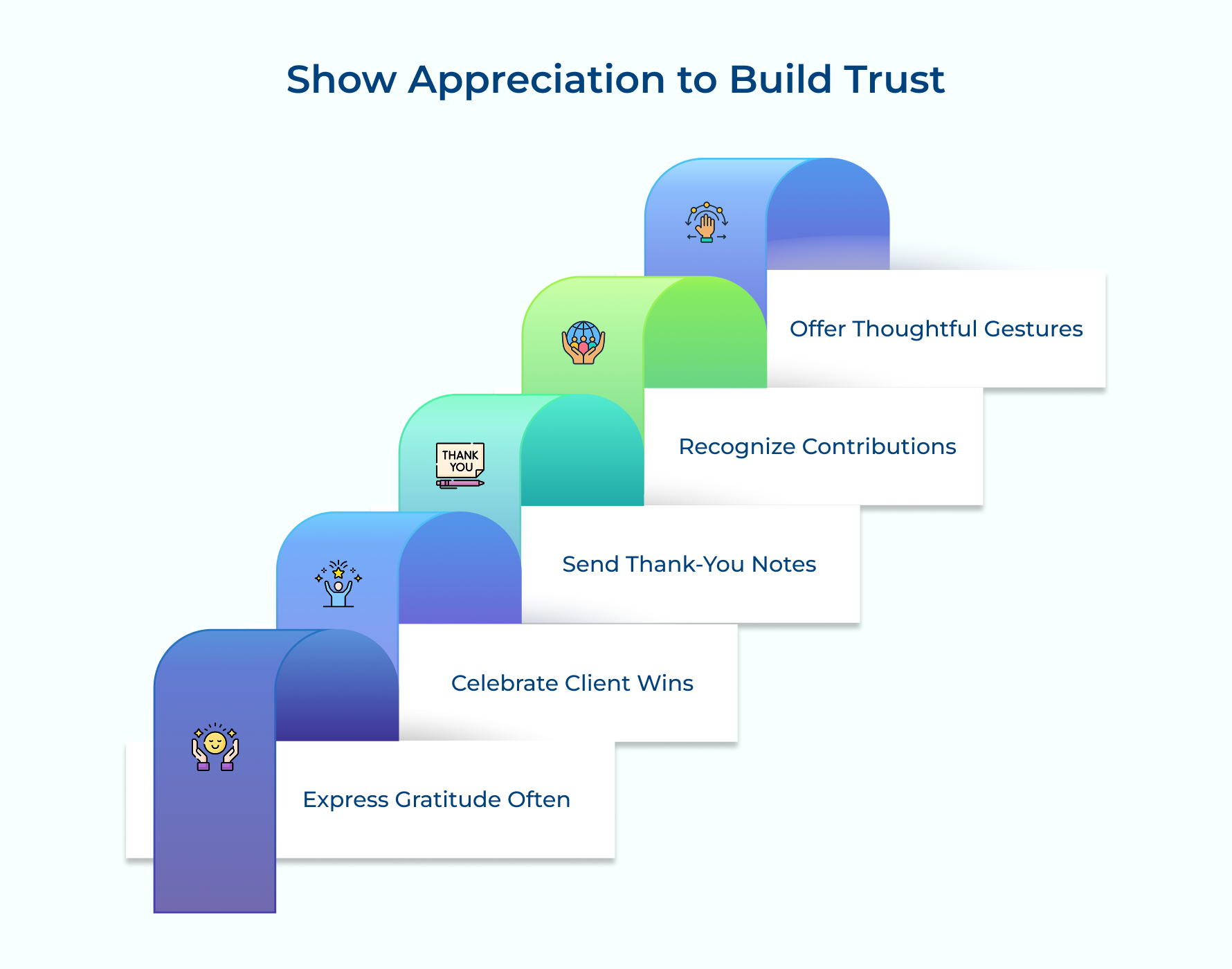15 Effective Client Management Best Practices to Follow

Key Highlights:
- Regular feedback and testimonials reinforce credibility, making client management best practices a key driver for sustainable growth.
- Proactive problem-solving and exceeding expectations help businesses deliver exceptional service.
- Building strong relationships through clear communication, transparency, and trust ensures long-term success as well as enhances client retention.
Struggling with client retention? Poor client management can lead to frustration, misunderstandings, and even lost business opportunities.
Meeting client expectations becomes tough, leading to high churn rates and weakened customer loyalty without a structured approach. This not only impacts existing clients but also makes it harder to attract potential clients.
Strong client relationships start with effective communication, transparency, and ongoing support. In this blog, we’ll walk you through client management best practices to keep your clients happy and engaged for the long haul.
15 Effective Client Management Best Practices
Strong client relationships are key to business success. Here are 15 client management tips and best practices to boost retention and drive growth.
Understand Client Objectives
Understanding your client’s business goals, challenges, and industry is the foundation of strong relationships as well as effective client relationship management.
When you tailor your services based on their specific needs, you position yourself as a trusted partner, not just a service provider.
Offering valuable insights aligned with their objectives builds trust and keeps your services relevant over time.
How to be more efficient?
- Ask about their long-term goals in initial meetings and revisit them regularly.
- Stay updated on industry trends and offer proactive solutions that showcase your expertise.
- Schedule strategy sessions to ensure continuous alignment with their evolving needs.
Clear and Transparent Communication
Clear and honest communication is the key to strong client relationships. When clients know the project details, timelines, and deliverables from the start, there’s less room for misunderstandings.
Keeping them in the loop builds trust and ensures expectations align with reality—no last-minute surprises, just smooth collaboration.
Keep communication effective by:
- Set clear expectations from day one, so everyone is on the same page.
- Regularly update clients on progress, milestones, and any changes to keep transparency at every stage.
- After meetings, send a quick recap to confirm decisions and avoid confusion.
Establish a Dedicated Point of Contact
Assigning a single point of contact streamlines communication and helps maintain consistency in client relationships.
Clients appreciate having one dedicated person to go to for questions or concerns. It builds trust and minimizes confusion, ensuring clear as well as consistent messaging.
Appoint a project manager or team lead to be the main point of contact for the client. Keep them informed about any changes to this role if needed.
Actionable tips:
- Introduce the dedicated point of contact early in the relationship to build rapport.
- Ensure the assigned contact is responsive and proactive in addressing client inquiries.
Set Realistic Expectations
Imagine this—you’re working with a client who expects a full marketing campaign in just a week. If you don’t set clear expectations upfront, they might be disappointed when things take longer. That’s why honest conversations about timelines, deliverables, and challenges are crucial.
When expectations are clear, there’s no room for frustration. For example, if a sales team needs a new pitch deck, let them know when they can expect drafts and revisions. Going the extra mile doesn’t mean overpromising—it means delivering exactly what’s agreed upon with clarity and confidence.
- Before starting, discuss scope, deadlines, and potential roadblocks.
- Check in regularly to ensure that client expectations stay aligned with reality.
- If changes arise, communicate them early to avoid surprises.
Strategic Onboarding Process
A smooth onboarding process lays the groundwork for strong client relationships and hassle-free collaboration. When done right, it minimizes miscommunication, aligns expectations, and ensures your team understands the client’s needs from day one.
Here’s how to make onboarding seamless:
- Gather key information: Understand client goals, challenges, and stakeholders from the start.
- Set up processes: Create workflows for communication, approvals, and project tracking.
- Establish relationships: Introduce key team members and align on working styles early.
Tips to consider:
- Create a “Client Bible”, a document with all essential details, preferences, and guidelines. Keep it updated!
- Schedule a “Ways of Working” session in the first week to set expectations for communication, approvals, and handling urgent requests.
Be Adaptable to Changing Client Needs
Being flexible to adjust the scope, timelines, or methods to meet a client’s evolving needs ensures the continued relevance of your services.
Clients’ needs may shift due to changes in their industry, market conditions, or business objectives. Adaptability helps retain clients in a dynamic environment.
Regularly assess clients’ goals and projects to identify any changes. Proactively suggest adjustments to the project scope or approach as needed.
Tips to consider:
- Hold quarterly reviews to assess any changes in client objectives or market conditions.
- Stay open to adjusting project scope or deliverables if the client’s needs evolve during the process.
Maintain a Consistent Quality of Service
Delivering high-quality service every time isn’t just a nice-to-have—it’s the key to client retention and a strong reputation. When clients know they can rely on you, they’ll keep coming back!
Here’s how to stay consistent:
- Set clear quality standards: Define expectations and make sure your team follows them.
- Monitor performance: Regularly assess work to maintain high standards.
- Gather client feedback: Check in often to ensure you’re meeting their expectations.
Actionable tips:
- Implement quality checks at different project stages to catch issues early.
- Ask for regular feedback and tweak your approach to keep clients happy as well as engaged.
Proactively Address Potential Issues
Ever had a project where a last-minute issue threw everything off track? That’s why proactive problem-solving is a game-changer in customer relationship management!
Imagine your sales team is working on a big campaign, but you notice potential delays due to design approvals. Instead of waiting for the deadline crunch, you flag the issue early, suggest a buffer in the timeline, and keep the client informed.
Here’s how to stay proactive:
- Regularly review project progress to spot risks early.
- Keep clients updated on any possible hiccups and offer solutions upfront.
- Create a risk-management plan so you’re always prepared.
Pro tip: Clients appreciate when you go the extra mile to solve problems before they even realize there’s one!
Regularly Ask for Feedback
Ever wrapped up a project only to realize the client had concerns they never voiced? That’s why ongoing feedback is key to successful client management.
Let’s say you’re managing a marketing campaign and using project management tools like Asana or Trello. Instead of waiting until the end, you check in after each milestone—“Hey, how’s everything looking so far? Any tweaks you’d like?” This keeps clients engaged and gives you a chance to adjust in real time.
Tip to consider: When clients see their suggestions in action, they feel heard—and that builds long-term trust!
Deliver Value Beyond Expectations
Want to stand out and build strong client relationships? Surprise them with extra value—not just what they paid for but insights and recommendations that truly help their business.
For example, say you’re working with a sales/marketing team on a new CRM setup. Instead of just implementing the tool, you also share best practices, industry trends, or even a quick tutorial on maximizing conversions. Suddenly, you’re not just a service provider—you’re a trusted advisor.
Pro tip: Clients remember those who go beyond the basics. The more value you add, the more likely they are to stick around and refer you to others.
Maintain Transparency in Billing and Budgeting
Nobody likes unexpected costs. Being upfront about pricing and keeping clients in the loop helps prevent misunderstandings as well as builds long-term trust.
But how do we do it right?
- Break down costs upfront: Clearly outline pricing, deliverables, and potential additional charges.
- Discuss changes before they happen: If costs shift, let clients know why and get their approval first.
- Provide regular budget updates: Keep clients informed about expenses so there are no surprises.
Build Long-Term Relationships
Great client relationships don’t end when a project does—they evolve. Staying connected shows you genuinely care and keeps the door open for future collaborations.
Keep the momentum going by:
- Following up after project completion: A simple check-in can reinforce trust and open doors for future work.
- Offer ongoing support: Be available for questions or small updates to keep the relationship warm.
- Staying in touch regularly: Share helpful insights and industry updates, or just drop a friendly “How’s it going?” email.
Pro tip to consider: Schedule quarterly reviews to understand their evolving needs and explore new ways to add value.
Encourage Referrals and Testimonials
Satisfied clients are your best marketing asset. A strong testimonial or referral can do wonders for attracting new business.
Getting a quality testimonial is easier than you think,
- Ask at the right time: Right after a successful project is the best moment to request a testimonial or referral.
- Make it easy: Provide a simple template or form so clients can quickly share their thoughts.
- Offer a little incentive: A small discount or exclusive perk can encourage more referrals.
Actionable tip: Send a friendly follow-up email thanking them for their business and casually ask if they’d be open to sharing a testimonial.
Be Transparent About Challenges and Risks
Imagine this: You’re halfway through a project, and an unexpected delay pops up. If your client hears about it at the last minute, they’ll be frustrated.
If you’ve been upfront about potential risks from the start, they’ll appreciate your honesty and problem-solving approach.
- Discuss challenges early: At the beginning of the project, highlight possible roadblocks (e.g., delays in approvals, resource limitations) and how you plan to handle them.
- Keep clients in the loop: Regularly update them on any emerging risks so there are no surprises.
- Always have a solution ready: If an issue arises, communicate it along with a plan to fix it.
Show Appreciation and Gratitude
Regularly expressing appreciation for your client’s business and trust helps build goodwill as well as strengthens the partnership.
Gratitude helps maintain a positive relationship, making clients feel valued and reinforcing long-term collaboration.
Send thank-you notes or occasional gifts, or simply express appreciation in meetings. Recognize their contributions to the success of the project.
Tips to consider:
- Send personalized thank-you notes after completing major milestones or projects.
- Celebrate client anniversaries or achievements with small gestures of appreciation.
Drive Business Growth with Client-Focused Practices
Mastering client management is all about building lasting relationships that fuel your business’s growth. When you communicate, set the right expectations, and go the extra mile, clients notice. Stronger relationships lead to loyalty, referrals as well as long-term success.
Keep refining your approach. Regularly review your processes, adapt to client needs, and stay proactive. Business landscapes change, but a client-first mindset keeps you ahead of the curve. Invest in great client management and you’ll see the rewards in repeat business, trust, as well as a thriving reputation.
Limit time — not creativity
Everything you need for customer support, marketing & sales.
Neeti Singh is a passionate content writer at Kooper, where he transforms complex concepts into clear, engaging and actionable content. With a keen eye for detail and a love for technology, Tushar Joshi crafts blog posts, guides and articles that help readers navigate the fast-evolving world of software solutions.



